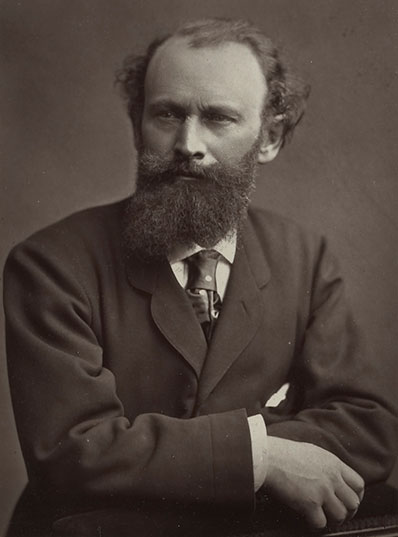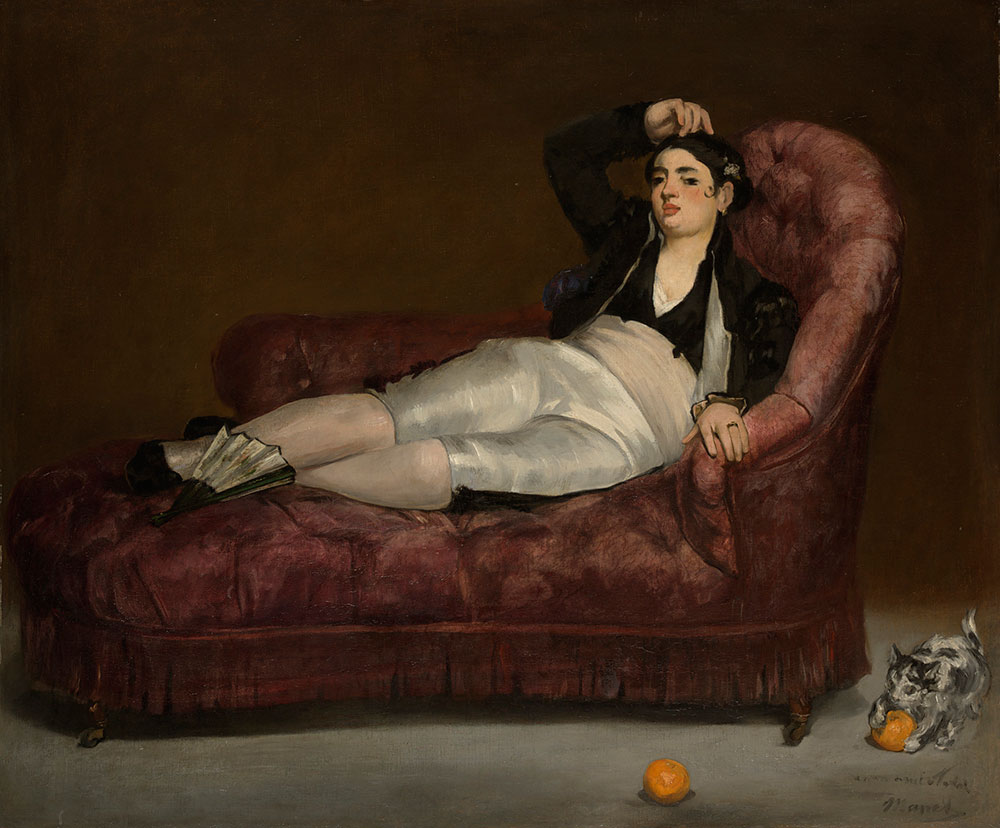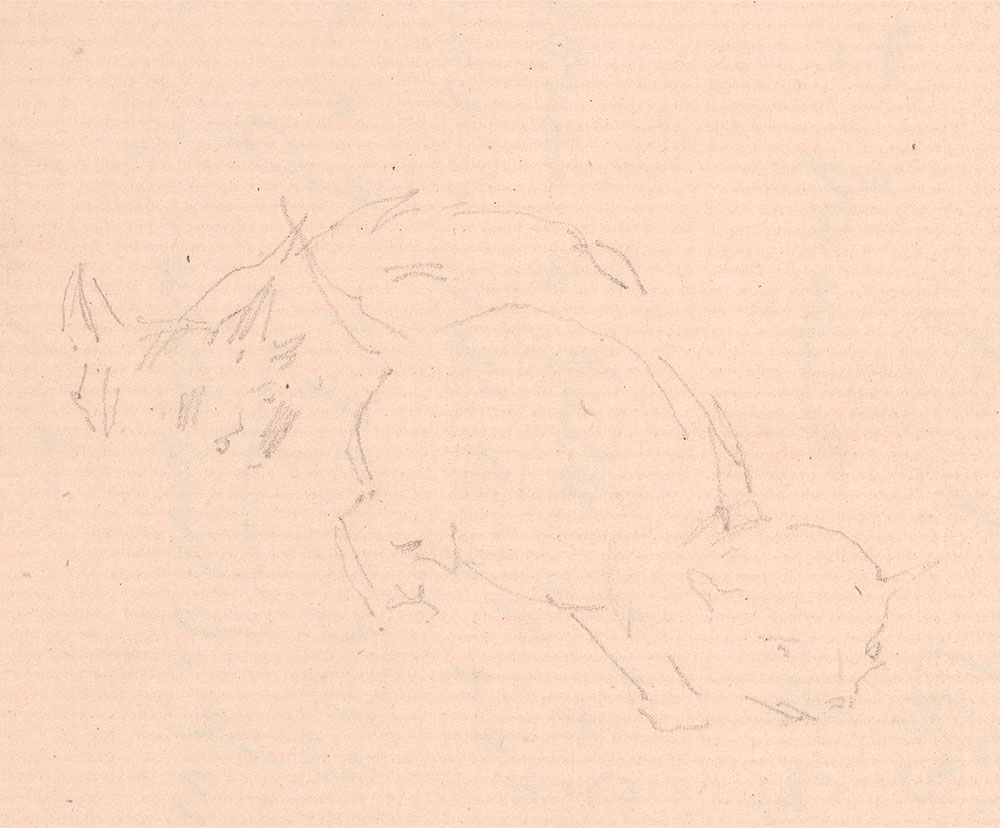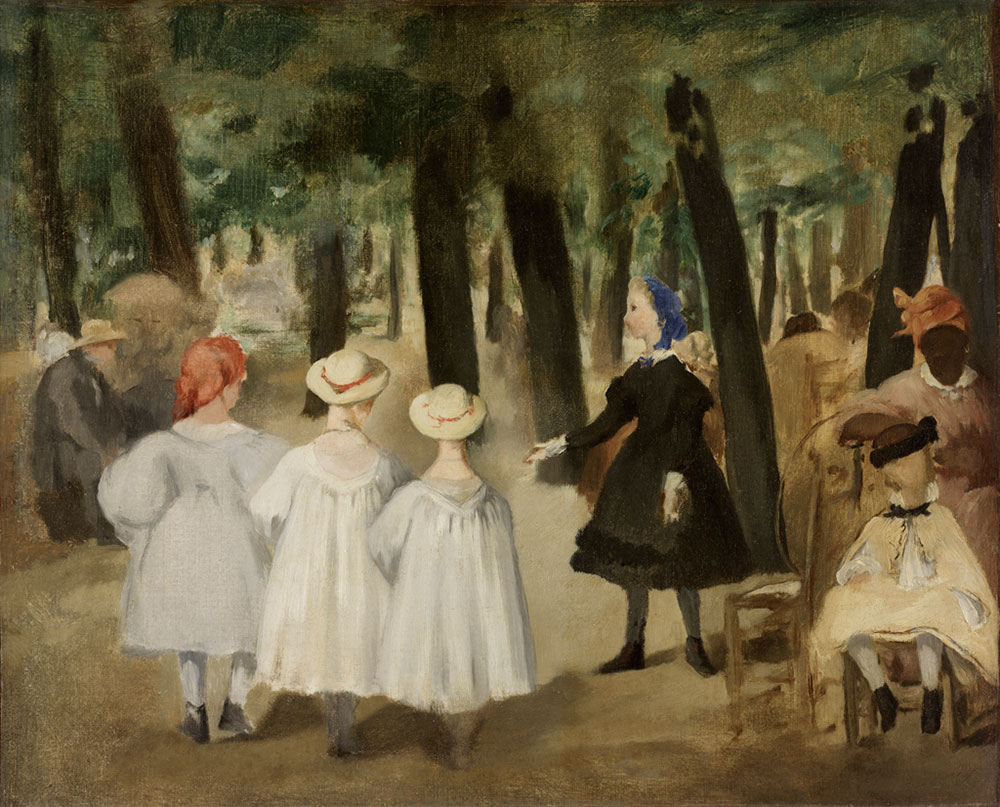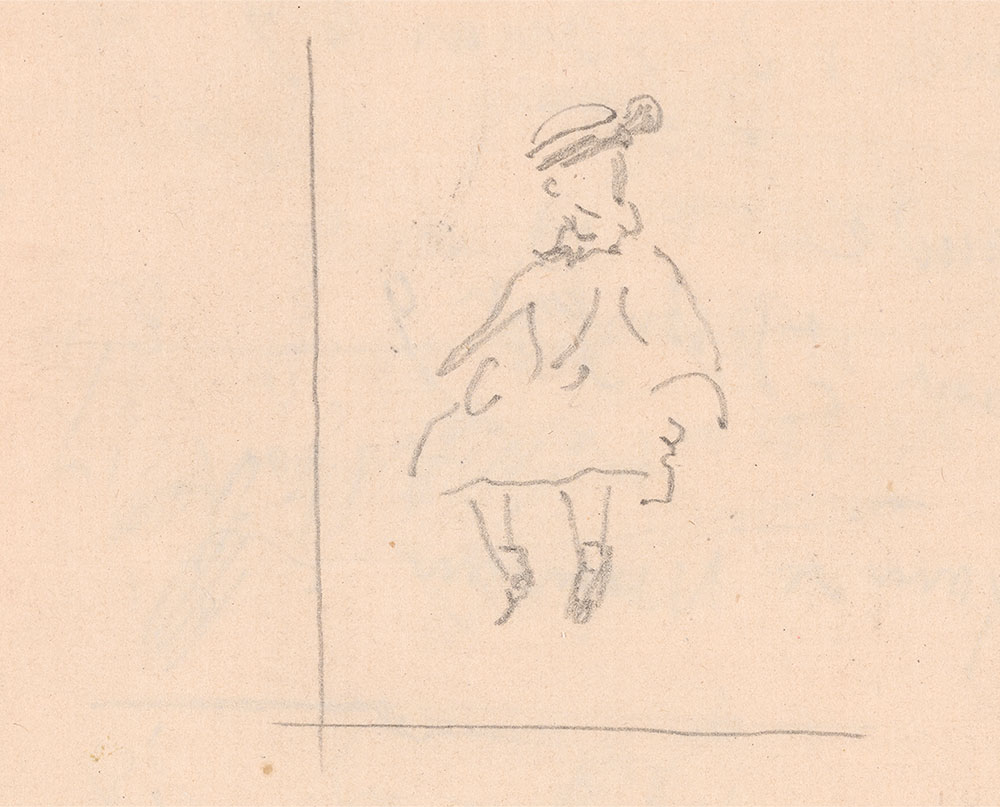Colin B. Bailey, Director, The Morgan Library & Museum (September 2019)
Introduction to Édouard Manet, Carnet de notes. (1860–1862) Nombreuses adresses, notamment de modèles. Et quelques croquis. The Morgan Library & Museum, MA 3950, Notebook 1. Purchased as the gift of Mrs. Charles Engelhard and children in memory of Mr. Charles Engelhard, 1974.
Édouard Manet’s carnet (notebook) that he used between 1860 and 1862 is the only surviving document of its kind from his hand. Along with letters and archival material relating to the artist, it once belonged to the journalist and art historian Adolphe Tabarant (1863–1950), who may have acquired it from Manet’s stepson, Léon Koëlla-Leenhoff. Tabarant, a militant socialist and author of the best-selling Petit catéchisme socialiste (1893), went on to befriend the Impressionist painter Camille Pissarro, on whom he published a monograph in 1925. Tabarant was a prolific writer responsible for two standard works on Manet: Manet: Histoire catalographique (1931) and Manet et ses œuvres (1947).
Around 1960, the American writer and editor Mina Kirstein Curtiss (1896–1985) acquired Tabarant’s Manet archive from his daughter, Lucienne, in preparation for a biography of the artist. (It is unclear whether she ever embarked upon it.) Curtiss was the elder sister of ballet impresario and scholar Lincoln Kirstein and a generous donor to the Morgan of material relating to Marcel Proust and E. E. Cummings. In 1974, through the support of Mrs. Charles W. Engelhard and her children, Curtiss’s collection of material by and relating to Manet formerly in the Tabarant archive—including more than one hundred letters, photograph albums, household accounts, and books from Manet’s library—was acquired by the Morgan in memory of Charles W. Engelhard. The Seventeenth Report to the Fellows of the Pierpont Morgan Library, 1972–1974, noted at the time, “This collection concerning Manet is a new dimension for the Library and a rich source for the study of the impressionist movement.”1
Manet used this notebook for about two years, from the age of twenty-eight to thirty, likely carrying it in his pocket. He recorded the names and addresses of models, publishers, framers, and collectors; he jotted down accounts and sums owed to him; and he made several summary sketches, which can be associated with a number of works in progress between 1860 and 1862. Many pages are blank, and some bear Tabarant’s later annotations. At the end of the notebook are two sheets inserted by Tabarant that list and identify (sometimes incorrectly) Manet’s illustrations.
Tabarant drew on unpublished information from this notebook in his two books on Manet. The curators of an exhibition organized in 1983 at the Grand Palais, Paris, and the Metropolitan Museum of Art, New York, to commemorate the centenary of Manet’s death did the same in their catalogue entries. More recently, the exhibition Posing Modernity: The Black Model from Manet and Matisse to Today, held at the Miriam and Ira D. Wallach Art Gallery, Columbia University, from October 2018 to February 2019 and curated by Denise Murrell, drew attention to the figure of the Black attendant in Manet’s Olympia, 1863 (Musée d’Orsay, Paris), identified on page 98 of this carnet (fol. 110) as “Laure, très-belle négresse,” living at “rue Vintimille 11, 3e” (third floor). When the exhibition transferred to the Musée d’Orsay in Paris in March 2019 for an expanded presentation titled Le modèle noir: De Géricault à Matisse, the Morgan Library & Museum loaned Manet’s notebook for the first time. It was shown in the section devoted to Olympia, opened to the page where Manet refers to his Black model. Research into the Paris cadastral records further established that Laure’s modest apartment on the rue de Vintimille, just south of place Clichy, was in fact on the fourth floor, not the third. The apartment was part of an industrial complex of four shops and forty-eight small dwellings, whose residents included wine merchants, dressmakers, and hairdressers.2 It seems likely that Manet made a sketch of the complex on the same page (p. 98/fol. 110) to help him remember the location of Laure’s dwelling.
The notebook documents aspects of Manet’s life and work in the two years leading to his most significant contributions to modern painting: Le Déjeuner sur l’herbe and Olympia, both signed and dated 1863 (both Musée d’Orsay, Paris). A faint annotation early in the notebook for the receipt of five francs “on account” (p. 3/fol. 15), dated 8 January 1861, indicates that Manet started using this book while still in his studio on the rue de Douai, which he had begun renting in the summer of 1860. Near the end of the book, on page 100 (fol. 112), he notes the address of his new studio at 81, rue Guyot, into which he moved in the summer of 1861. This too was in the Batignolles district, in Paris’s 17th arrondissement. (The street was renamed the rue Médéric in 1944.)
As the source of the identity of the Black model in Olympia, Manet’s notebook has long been acknowledged to be of great interest. On pages 96 and 97 (fols. 108–9), before he noted Laure’s name and address, Manet listed the names and addresses of several other models: Sarah Blum, Sidonie, Fernande, Louise (“p[e]t[ite] brune”), and a certain “Louise Meuran” [sic], who lived at 17, rue Maître-Albert, near the Palais de Justice. This is the earliest reference to Victorine Louise Meurant (1844–1927), the red-haired model who between 1862 and 1873 posed for many of Manet’s most celebrated compositions: Mademoiselle V . . . in the Costume of an Espada, 1862 (Metropolitan Museum of Art, New York), Le Déjeuner sur l’herbe and Olympia, both 1863, Young Lady in 1866, 1866 (Metropolitan Museum of Art, New York), and The Railway, 1873 (National Gallery of Art, Washington, DC).
As noted in the recent exhibition catalogue Manet and Modern Beauty, on page 21 (fol. 33) Manet wrote, “M. Lacaze [sic], Cherche Midi 118,” a reference to Dr. Louis La Caze (1798–1869), who lived at 118, rue du Cherche-Midi.3 A cholera specialist, La Caze was also the foremost collector of old master and eighteenth-century French paintings in Paris. His collection—which would be donated to the Louvre after his death—was accessible to artists and critics; others could request to view it on Sundays from 11 am to 2 pm “by application in writing to the owner,” as noted in Galignani’s New Paris Guide.4 A less expected reference on page 9 (fol. 21) mentions a visit to a certain “Mme de Surville, rue des Martyrs 47 (et non le 49). Quelle heure? 7 h?” Laure de Surville (1800–1871) was Honoré de Balzac’s younger sister, and this is the first indication of her association with Manet—and, perhaps, with his family—an association hitherto undocumented.
For art historians, the most revelatory part of the notebook is its quickly executed drawings and sketches, none of which has been previously published. Tabarant listed eighteen such drawings in his “Relevé des dessins” (List of Drawings) appended at the end of the notebook (see fols. 117–18). Several of these sketches may be associated with paintings and etchings upon which Manet was at work around 1861 and 1862. For example, on page 37 (fol. 49) is a small vertical sketch of the hilt of a sword, which likely relates to Manet’s painting Boy with a Sword, 1861 (Metropolitan Museum of Art, New York), in which nine-year-old Léon Koëlla-Leenhoff is portrayed in seventeenth-century dress carrying a large sword. (The composition was also etched in four different states.) A drawing of two playful cats, one behind the other, appears on page 40 (fol. 52), with two framing lines. Juliet Wilson-Bareau has kindly noted that these framing lines may have been drawn at a later date, and are unlikely to be by Manet's hand. Tabarant’s notations in pencil at the top of the page instruct the reader to turn the book around: “Chats (Voir dans l’autre sens).” The head of the kitten at left, with pointed ears, relates quite closely to the cat playing with an orange at lower right in Reclining Young Woman in Spanish Costume, 1862–63 (Yale University Art Gallery, New Haven), a painting inspired by Goya’s Naked Maja, 1795–1800 (Museo Nacional del Prado, Madrid).
On page 52 (fol. 64) is a graphite sketch of an expansive but unpopulated landscape of hills, sky, and undulating plains and trees. This drawing can be related to Manet’s Fishing, 1862–63 (Metropolitan Museum of Art, New York), in which he placed himself and his companion Suzanne Leenhoff strolling in Rubensian dress. Annotations by Manet on the drawing may refer to light effects and dimensions of the final composition. As Tabarant indicated, this page too must be turned 180 degrees to be legible (“voir dans l’autre sens”). Two even slighter full-page vertical sketches, of trees in a clearing (p. 74/fol. 86) and of a cluster of buildings (p. 84/fol. 96), may also be associated with this painting.
Perhaps the most significant sketch in the notebook is to be found on page 95 (fol. 107), where, once the page is rotated ninety degrees, we see a little girl in a bonnet seated on a chair, her legs dangling beneath her. Tabarant identified this, incorrectly, as “Croquis de petite fille pour la Musique aux Tuileries (1860),” a reference to Manet’s Music in the Tuileries Gardens, 1862 (National Gallery, London). In fact, the sketch of the seated girl is preparatory for the little figure at right in Manet’s unfinished Children in the Tuileries Gardens, ca. 1861–62 (RISD Museum, Providence).
In this painting, the well-dressed young girl, in elegant cape, bonnet, and booties, is shown with her nanny, a Black woman, standing behind her. This latter figure was likely based on Manet’s model Laure. The painting in Rhode Island is the first of three works by Manet, including an unfinished portrait, ca. 1862 (Pinacoteca Giovanni e Marella Agnelli, Turin) and Olympia, 1863, with which Laure can be associated.
Notes
- Charles Ryskamp, ed., The Seventeenth Report to the Fellows of the Pierpont Morgan Library, 1972–1974 (New York: Pierpont Morgan Library, 1976), p. 110.
- Estelle Bégué, and Isolde Pludermacher, “Les modèles noirs dans le Paris du XIXe siècle et du début du XXe siècle,” in Le modèle noir: De Géricault à Matisse (Paris: Musée d’Orsay, 2019), p. 200.
- Scott Allan, Emily A. Beeny, and Gloria Groom, eds., Manet and Modern Beauty: The Artist’s Last Years (Los Angeles: J. Paul Getty Museum, 2019), p. 98.
- Galignani’s New Paris Guide for 1861 (Paris: A. and W. Galignani, 1861), p. 110.

